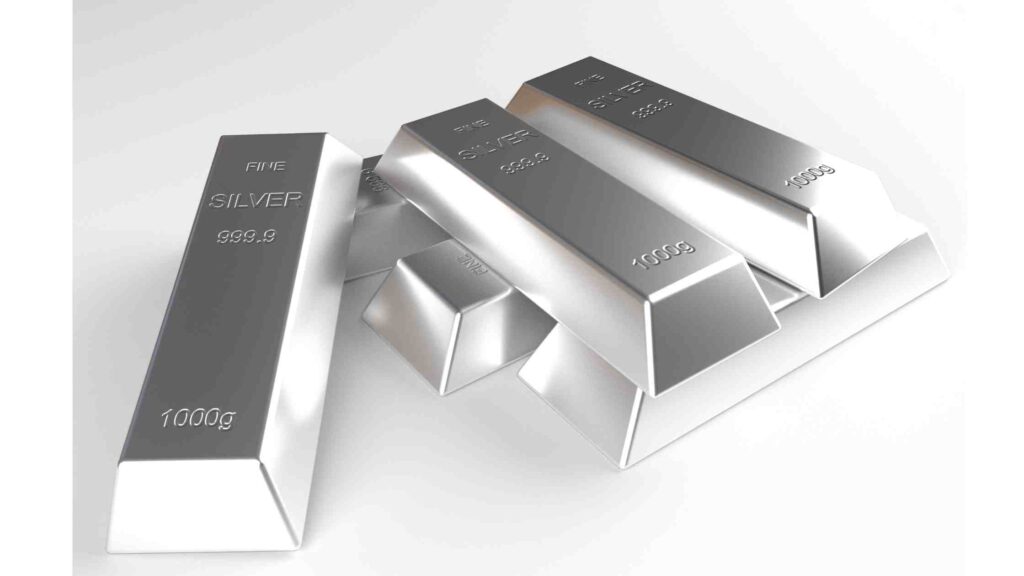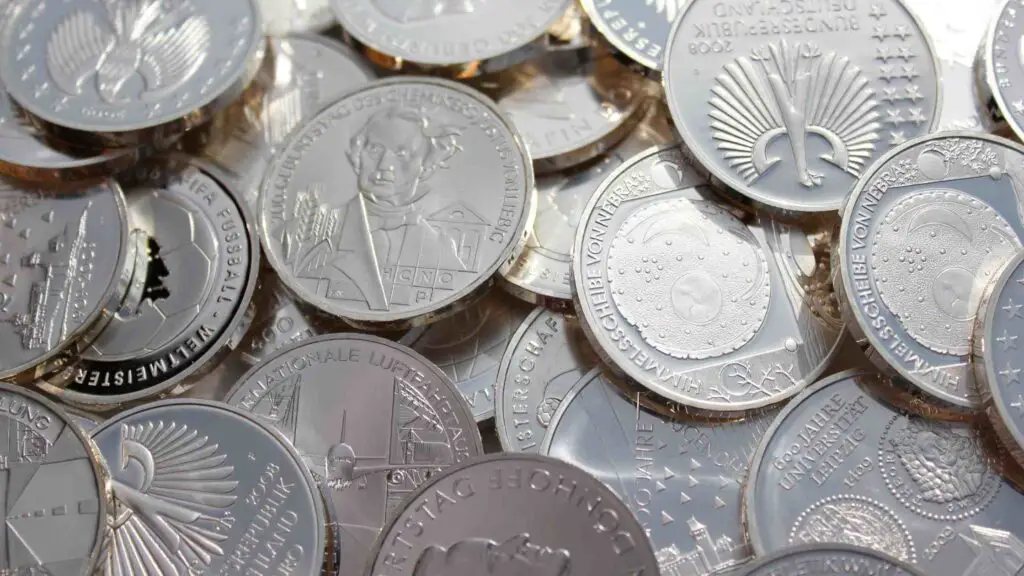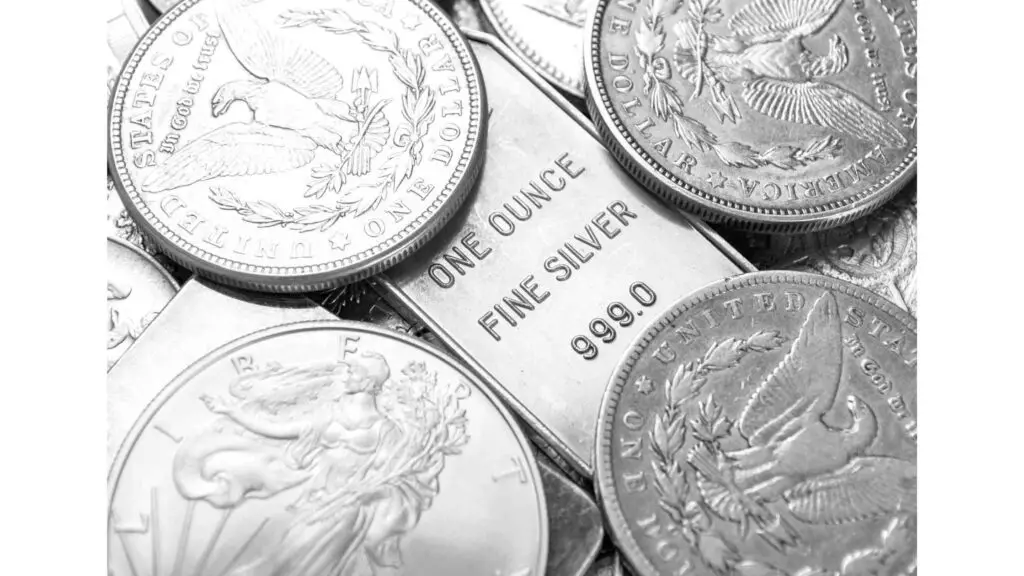Why is there a silver shortage in 2023? Silver is a chameleon, and It frequently happens when one least expects it, taking on the appearance of a financial metal one minute and then changing into an industrial metal the next. This would explain the almost exact one-to-one link between copper and silver prices, particularly when the economy is skewed toward global expansion or higher inflation.
Traders in physical Silver have faced challenging market conditions for at least a few years. There have recently been significant shortages, and the U.S. Mint has not been able to supply the marketplace as mandated by law.
According to David Morgan, founder, and author of The Morgan Report, silver supplies will run out, and global supply will “absorb all the silver available.” Over the next ten years, demand will drive up silver prices, making Silver the best purchase in decades.
DiscontinuedNews is impartial and independent, and every day, we create distinctive, world-class programs, news, and content that inform, educate and entertain millions of people worldwide.
Why is there a silver shortage?

Silver prices might surpass gold this year and reach a nine-year high of $30 per ounce. The most recent time spot silver topped $30 per ounce was in February 2013, as per Refinitiv’s closing price information. Silver’s insufficient supply mainly supports the prediction. Also, its ability to outperform gold in times of rising inflation is another strength, and economists told CNBC.
“In periods of high inflation, silver has historically generated profits of up to 20% per year.” According to Janie Simpson, managing director at ABC Bullion, “it really wouldn’t shock me to see silver climb towards $30 per ounce in 2023.” Given that track record and how cheap Silver remains relative to gold, this will likely provide strong resistance.
According to Nicky Shiels, head of metals research at precious metals firm MKS PAMP, “Silver is in scarcity.” “Also, there is a considerable decline in the accessible physical inventories kept in New York and London’s physical hubs, more than seen in gold.”
According to Shiels, there will likely be shortfalls of more than 100 million ounces of Silver during the next five years. This may be due to industrial demand driving a limited supply.
Bullion sales had calmed down a little from the frantic pace of the previous two years by August 2022. However, in September, consumers returned to the market with fury, and stocks of the best-selling goods reflected the pressure.
Delivery delays have resumed for several commodities, and prices are again on the rise, with silver stocks suffering the most. More vigorous opponents of money metals are particularly suffering. There are currently shortages of one-ounce silver rounds and bars in all sizes. Consumers stay clear of more expensive silver coins, especially the difficult Silver Eagle.
Will there ever be a shortage of Silver?
Once again, the main obstacle is the refiners’ and mints’ ability to generate retail bullion goods. Although there is significant demand for 1,000-oz silver bars, prices for such big bars have remained stable. The price premium for 1,000-oz bars will increase if there is a silver shortage. However, the current shortfall is in the refiners’ and mints’ ability to manufacture huge bars into more miniature goods.
The U.S. Mint has contributed, at least in part, to the strain on premiums. The Mint hasn’t increased supplies despite being required to make coins in amounts “sufficient to satisfy growing demands.”
Private refiners and mints have been steadily increasing their capacities, while the U.S. Mint is producing justifications in their place. Congressman Alex Mooney (R-WV) wrote Director of the Mint Ventris Gibson a short letter, and Ms. Gibson replied. She blamed COVID and the suppliers of blanks for the problems.
Predictably, the U.S. Mint’s letter was long on excuses and needed more answers. The chief official at the U.S. Mint said that rather than preparing to create blanks internally, she intends to acquire a few new suppliers who can do so.
Plans to build inventory should have been mentioned when demand is noticeably slowing down. Gibson should have addressed the Mint’s intentions to increase staff, resources, or internal capabilities.
Silver supply shortage
Base metals like copper and lead have seen price declines of 18.4% and 8.3%, respectively, during 2021. According to Morgan, there will be a lower incentive to mine Silver. Silver is typically a byproduct of base metal mining if base metal costs decline.
He said, “Base metal mining plays a vital role for 70% of silver.” “If it decreases and declines considerably, then a major proportion of silver supply is removed from the market.” As the world’s oil sources were reduced, Morgan predicted that growing energy prices would restrict the production of Silver.
Morgan predicted that Silver’s industrial applications would expand further. This will reduce the available supply. He pointed to the emerging manufacturing utilization of Silver in sectors like semiconductors and photovoltaics.
According to the Silver Institute’s pie chart, the solar business accounted for around 9% of the silver industry in 2019. Today, that percentage is close to 12, and it will likely keep rising, he said. We remember that the United States released a statement.
The U.S. Mint’s Mint Master informed the Mint that there was a severe lack of Silver. He quickly walked back to his statement. He said he believes there is a need for more Silver everywhere. Thus, the Mint can only satisfy demand based on current production levels.
Morgan further stated that there are no effective industrial alternatives to Silver. Nothing conducts electricity better than Silver. Also, nothing reflects light as effectively as Silver. The majority of Silver’s uses are essential. There needs to be a replacement.
Silver coin shortage

A sad but essential solution to the nation’s coin shortage and to safeguard the Treasury’s silver reserves is to devalue the nation’s silver coins. The Treasury Department submits to Congress suggestions based on a year-long investigation into the alleged “silent crisis” in Silver. They gave suggestions for significant changes to the coinage system that are anticipated.
A global silver shortage, pressure from growing silver prices, and an endless need for Silver coins have made a shift unavoidable. Many analysts think there are only two viable options. They are: lowering the silver content of U.S. coins or replacing some of the coins’ Silver with a less expensive metal alloy.
According to the Oct. 14 issue of the New York Journal of Commerce, the most likely remedy was “a partial Treasury withdrawal from using the metal (silver) for coin.” The Treasury would need to balance the needs of several users fairly. This includes silver suppliers, silver users, merchants, banks, dispensing machine producers, customers, and production companies of other metals. These all make managing the transition “an extremely tough job.”
Even a partial withdrawal from a silver coinage by the Treasury would cause complex political and psychological issues. Since the first coinage act was passed in 1792, the current silver coinage system has remained in operation with only a few minor adjustments. The dime, quarter, half-dollar, and silver dollar all include a significant amount of Silver. This increases their economic worth and contributes to the public’s trust in bank notes.
Things to do in Silver shortage
It is still wise to steer clear of the insanely high premiums that come with American Eagles as long as the U.S. Mint gets its act together. We might even consider selling our Silver eagles to Money Metals. We can sell for $9.50 more than the spot to invest the money in more ounces in other aspects. Rounds and bars offer a far higher value than many other silver coins.
Because of the impending silver shortage, now is the time to buy. In addition to the fundamental laws of supply and demand, several additional factors exist. These factors tell us that Silver will be an essential component of our portfolio in the current market:
- Even in the middle of turmoil, Silver survives. In 1980, oil prices surged, and the U.S. accumulated colossal debt. Washington, D.C., was enveloped in political uncertainty as Silver spiked to $49.45 an ounce. These sounds are recognizable.
- Goods typically gain value when inflation is on the rise and the currency is weakening. Both are taking place right now. Thus, by purchasing Silver, we are getting twice as many rewards.
- And finally, Silver is an excellent protection against a lousy stock market. Portfolio diversification may thrive in a bad call and readily survive financial disasters. One perfect way to diversify is to purchase Silver.
Given the current market circumstances, it makes sense to allocate a small portion of our portfolio to Silver.
Conclusion
Due to its widespread use historically in jewelry, electronics, chemistry, medicine, and many other fields, Silver is a precious metal. A variety of economic, financial, and political circumstances influence its prices. Similar to gold, it is seen as a safe-haven asset that may keep its value during economic and geopolitical turmoil better than risky assets.
The silver market has experienced divergent trends in 2022. The precious metal’s price increased from around $22 per ounce in late January to roughly $26 per ounce in early March. It then declines to about $18 per ounce in September. Since then, it has recovered, reaching $21 per ounce in late November. Overall, the price of silver futures decreased by almost 7% from the previous year.
